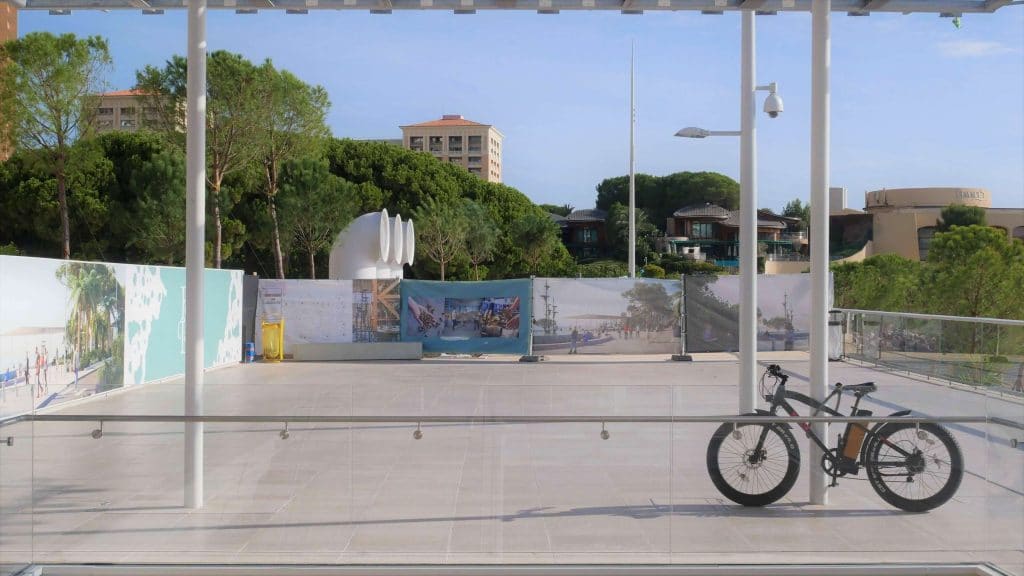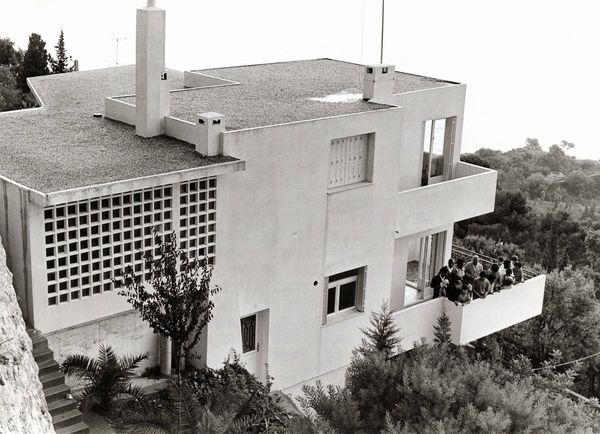Neighbourhoods: place Joséphine Baker, a tribute to an intriguing woman

Every month, Monaco Tribune introduces you to the major personalities or events that have given their names to iconic spots in the Principality. This month, we present the future place Joséphine Baker, in honour of the woman who will be entering the Paris Pantheon in the coming days.
At the end of the newly renovated complex by the Méridien hotel, access to a future square is blocked off by signs. Behind the panels, there will soon be a fountain and a sports area.

The Government recently decided to name the spot place Joséphine Baker, in honour of the extravagant artist who will be entering the Pantheon in Paris in November. It is next to Promenade Louise-Hippolyte and place Anne-Marie Campora. Through this gesture, the mayor Georges Marsan wants “to guarantee that the three women will continue to be remembered”.
The only downside is that the square is not yet accessible by the public. A gardener on the promenade says, jokingly, “I really hope they will be done for Christmas!” A worker tells us that the site was due for completion at the end of October, “but it is running late … we’re hoping by the end of November.” Looking around you can see the base of the Lartigue fountain, installed in 1969 for Princess Grace, which is currently dismantled and being restored.

An artist who fought Nazism
The Franco-American artist Joséphine Baker (1906 – 1975) established herself as a star of the music hall thanks to her powerful voice and extravagant costumes, and quickly became the darling of Paris and the whole of Europe.
At the outbreak of the Second World War, she joined the Red Cross and turned her castle in the Dordogne into a stronghold for the resistance. As a French counter-espionage agent, the singer used her music scores to pass on secret messages and took part in the Provence landings in 1944.
Josephine Baker continued to fight, even after the war. This time she took part in the struggle for black emancipation – she marched alongside Martin Luther King in the United States during the civil rights movement – and for women’s freedom.
During this time, the singer adopted twelve orphans from all over the world. A big family that she named the “rainbow tribe”, with whom she wanted to prove to the world that children from all walks of life can live in peace.
Princess Grace’s friend
Deep in debt, the icon of the Roaring Twenties was evicted from her castle in the Dordogne after problems with the tax authorities. A call for help went out in the entertainment world and was echoed by Brigitte Bardot.
A call answered by Princess Grace Kelly, a great friend of Joséphine Baker. The Princess gave her the Villa Maryvonne in Roquebrune-Cap-Martin, where the artist was able to live for the rest of her life with her family.

Princess Grace also gave her financial support and the possibility of performing on stage for charity shows in Monaco. The singer seized the opportunity and returned to the stage, in the hope of being able to pay off her debts.
She died in 1975 while on tour in Paris. After a ceremony in the French capital in the presence of Princess Grace, her remains were brought back to the Principality for a new ceremony at Saint-Charles church. The extravagant and intriguing Josephine Baker now lies in Monaco cemetery.












